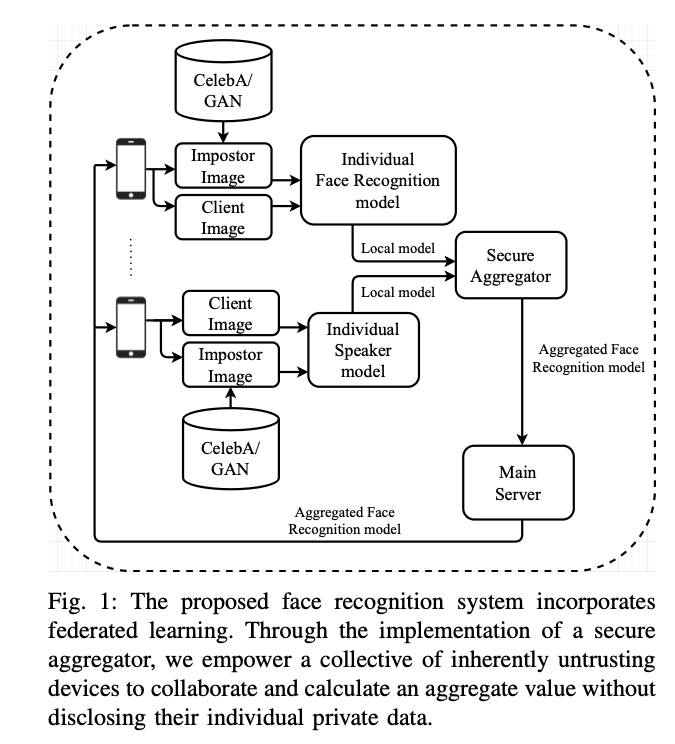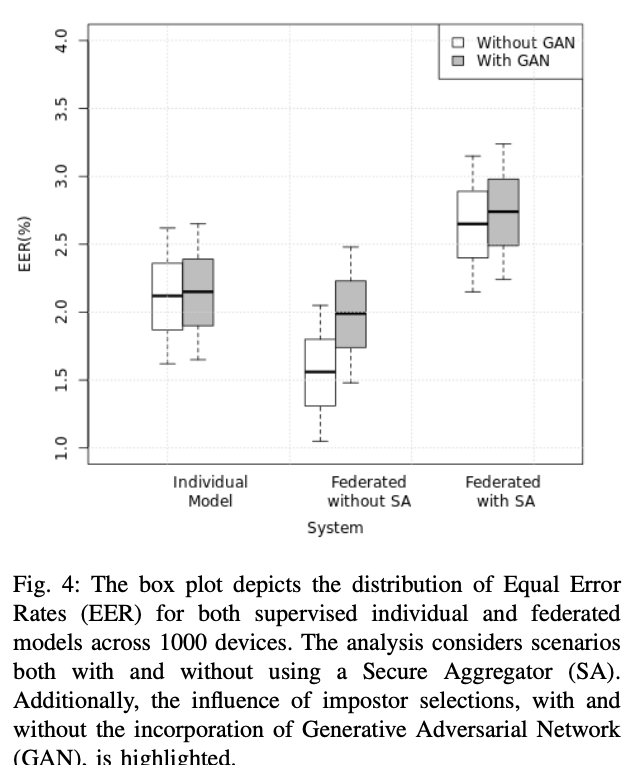Enhancing Privacy in Face Recognition Systems with Federated Learning
Face recognition technology has become an essential component in various security and authentication applications, from unlocking smartphones to airport security checks. However, the development of these systems often requires extensive datasets containing sensitive personal information, raising significant privacy concerns. This article examines a recent research paper that proposes an innovative approach using federated learning to address these privacy challenges while maintaining model performance.
Understanding Federated Learning in Face Recognition
Federated learning is a machine learning technique that enables the training of a shared model without the need to centralize data. In the context of face recognition systems, this approach allows for the development of accurate models while keeping sensitive facial data on individual devices.
Key Components of the Proposed System
The research paper “Federated Learning Method for Preserving Privacy in Face Recognition System” by Enoch Solomon and Abraham Woubie outlines a system with three main components:
- Edge Devices: These include smartphones, laptops, and other personal devices that store facial data.
- Secure Aggregator: An optional component that combines model updates from multiple devices.
- Central Main Server: Responsible for distributing the global model to edge devices.

How the System Works
- Each edge device trains its own model using local facial data.
- The trained models are sent to either a secure aggregator or directly to the central server.
- The secure aggregator or central server combines these individual models to create a global model.
- The global model is then distributed back to the edge devices.
This process allows for collaborative learning without the need to share raw facial data, significantly enhancing user privacy.
Advantages of Federated Learning in Face Recognition
Privacy Preservation
The primary benefit of this approach is the protection of user privacy. By keeping raw facial image data on individual devices and only sharing model updates, the system ensures that sensitive information remains secure. This decentralized method not only enhances privacy but also reduces the need for large-scale data transmission, conserving bandwidth.
Comparable Performance
One of the key findings of the research is that the federated learning approach can achieve performance levels similar to traditional centralized training methods. This is particularly true when the system does not use a secure aggregator, as shown in the experimental results.
Experimental Results and Analysis
The researchers conducted experiments using the CelebA dataset, a large-scale face attributes dataset with more than 200,000 celebrity images. They compared the performance of individual models trained on single devices with federated models trained across multiple devices.

Key Findings
-
Performance Comparison: The federated model achieved nearly identical performance to individual models, especially when not using a secure aggregator.
-
Impact of Secure Aggregation: The introduction of a secure aggregator led to a slight decrease in model performance, highlighting the trade-off between enhanced privacy and accuracy.
-
Supervised vs. Unsupervised Learning: The study examined both supervised and unsupervised face recognition systems, finding that federated learning was effective in both scenarios.
-
Impostor Data Generation: The researchers explored two methods for generating impostor data: selecting images from the dataset and using Generative Adversarial Networks (GANs). Both methods proved effective in improving model robustness.
Challenges and Considerations
While the proposed federated learning approach shows promise, it’s important to consider the challenges:
-
Privacy-Performance Trade-off: The use of secure aggregation enhances privacy but can slightly reduce model performance.
-
Computational Resources: Edge devices must have sufficient computational power to train local models effectively.
-
Communication Efficiency: The system must be designed to minimize the amount of data transferred between devices and the central server.
-
Model Convergence: Ensuring that the global model converges effectively across diverse datasets on different devices can be challenging.
Future Directions
The research opens up several avenues for future work:
-
Improved Aggregation Techniques: Developing more sophisticated methods for combining model updates from different devices.
-
Scalability: Investigating the effects of increasing the number of participating devices beyond the 1,000 used in this study.
-
Differential Privacy: Exploring additional privacy-enhancing techniques to further protect individual user data.
-
Application to Other Domains: Extending the federated learning approach to other areas of computer vision and machine learning.
Conclusion
The research presented in this paper demonstrates the potential of federated learning to address privacy concerns in face recognition systems. By enabling collaborative learning without the need to share raw data, this approach offers a promising solution for developing privacy-preserving face recognition technologies.
As face recognition continues to play an increasingly important role in our daily lives, the need for privacy-preserving techniques becomes more critical. The federated learning approach presented here provides a viable path forward, balancing the need for accurate models with the imperative of protecting individual privacy.
While challenges remain, particularly in terms of optimizing the trade-off between privacy and performance, this research represents a significant step towards more privacy-conscious AI systems. As the field continues to evolve, we can expect to see further refinements and applications of federated learning in face recognition and beyond.